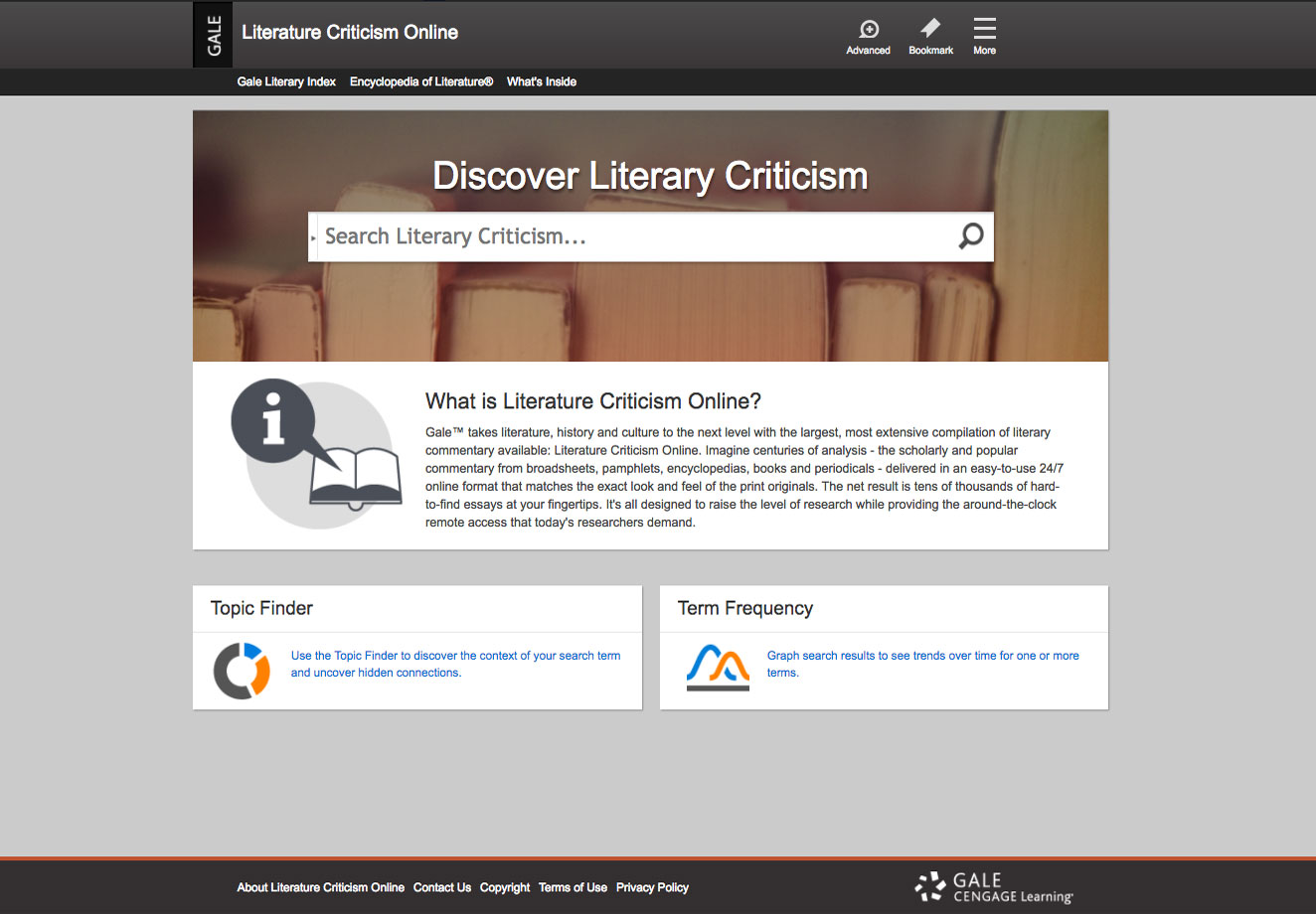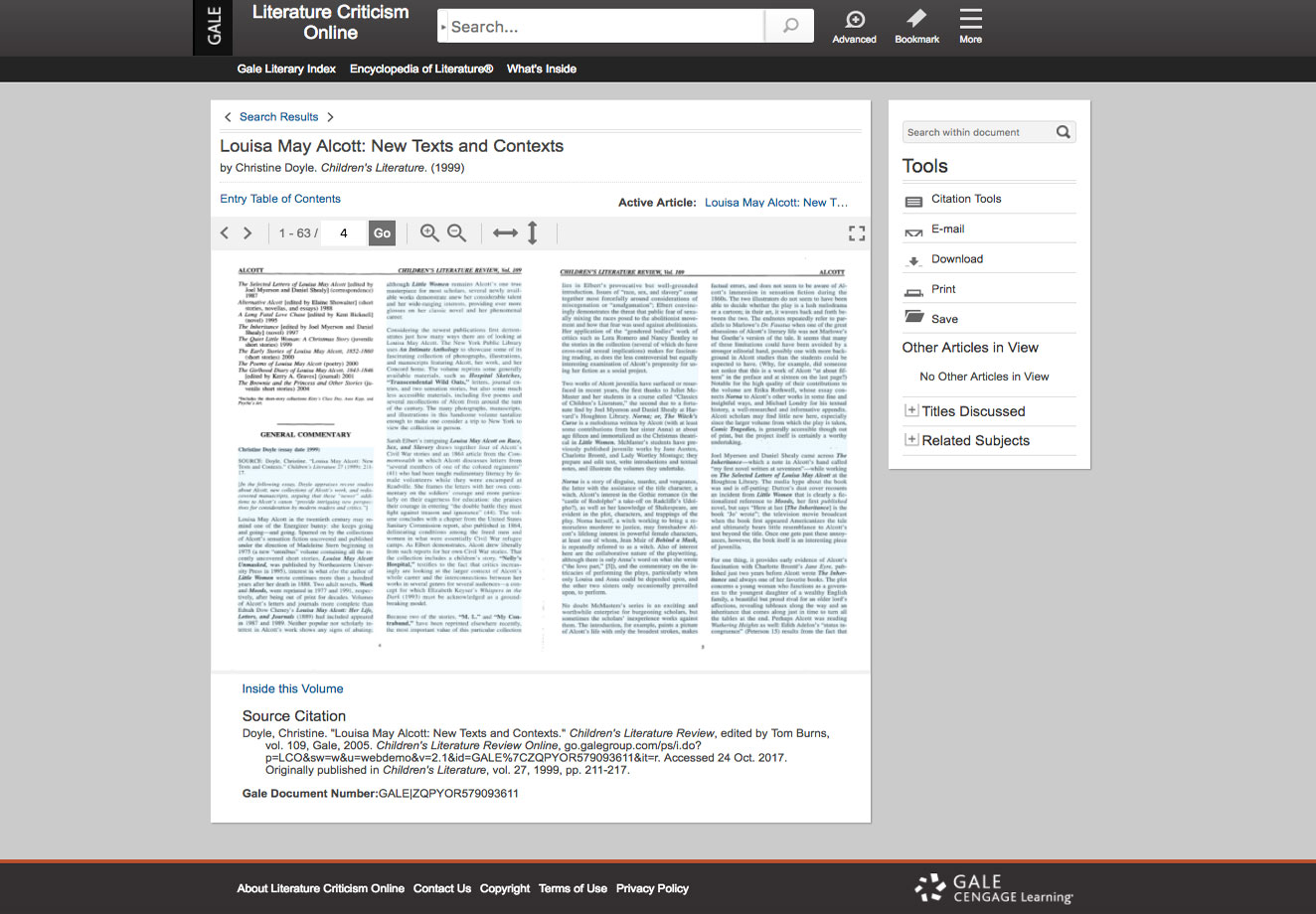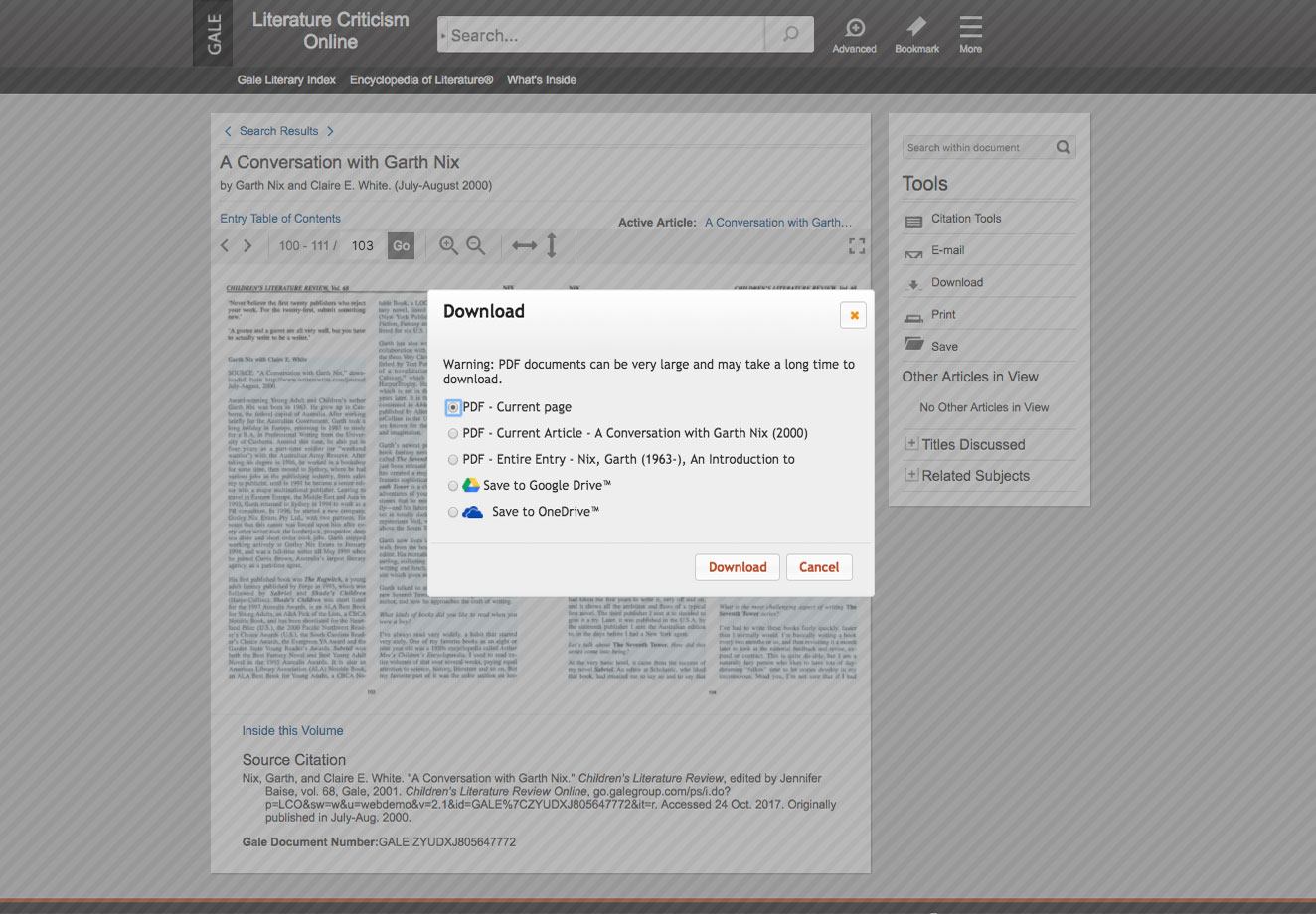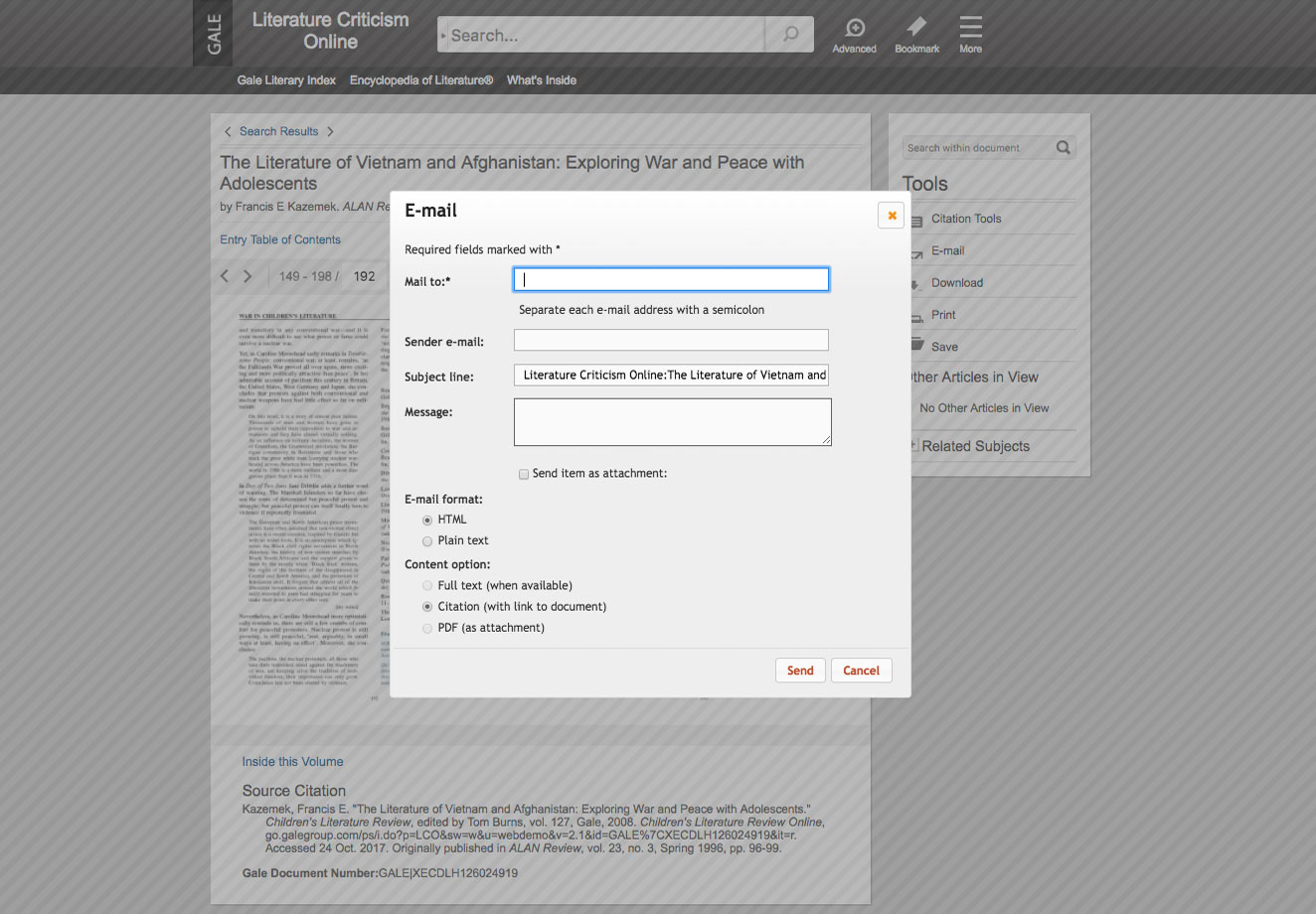Access critical information about children’s and young adult literature.
Children’s Literature Review, a part of Literature Criticism Online, helps parents, teachers and librarians make informed choices when selecting reading materials for young learners. This multifaceted resource also provides researchers of children’s literature with access to a wide variety of critical information from English-language sources in the field.
Children's Literature Review covers more than 750 authors, and includes entries on individual titles and topics in children’s and young adult literature such as picture books, folklore and graphic novels.
Entries are compiled by professional literature researchers and other subject experts who also write the introductions. Each entry includes a set of previously published reviews, essays and other critical responses from sources such as:
- Scholarly books and journals
- Literary magazines
- Interviews
- Letters and diaries
All materials are carefully selected to create a representative history and cross-section of critical responses.
The online version of Children’s Literature Review combines helpful technological tools such as multiple search and browse options with an engaging visual format that matches the look and feel of the print originals. More than 97% of critical essays from the print series of Children’s Literature Review are reproduced in full.
Look Inside
Additional Details
subjects covered
- Creative Writing
- Education
- English Language
- English Literature
- Language Teaching and Learning
- Literature
- Publishing
- Sociology
- Translation Studies
Platform Features & Tools
Topic Finder
By grouping commonly occurring themes, this tool reveals hidden connections within search terms—helping to shape research by integrating diverse content with relevant information.
Collaboration Tools
Integrated G Suite for Education and Microsoft Office 365 tools enable users to share, save, and download content—including highlights and notes.
Term Frequency
Researchers can see the frequency of search terms within sets of content to begin identifying central themes and assessing how individuals, events, and ideas interact and develop over time.













